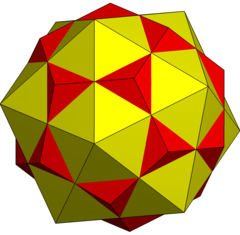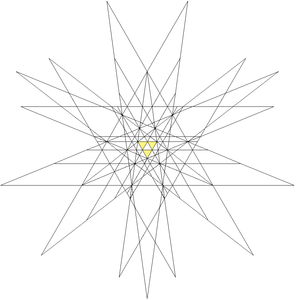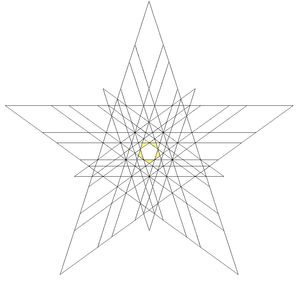| First stellation of icosidodecahedron | |
|---|---|
 | |
| Type | Dual compound |
| Coxeter diagram | |
| Stellation core | icosidodecahedron |
| Convex hull | Rhombic triacontahedron |
| Index | W47 |
| Polyhedra | 1 icosahedron 1 dodecahedron |
| Faces | 20 triangles 12 pentagons |
| Edges | 60 |
| Vertices | 32 |
| Symmetry group | icosahedral (Ih) |
In geometry, this polyhedron can be seen as either a polyhedral stellation or a compound.











